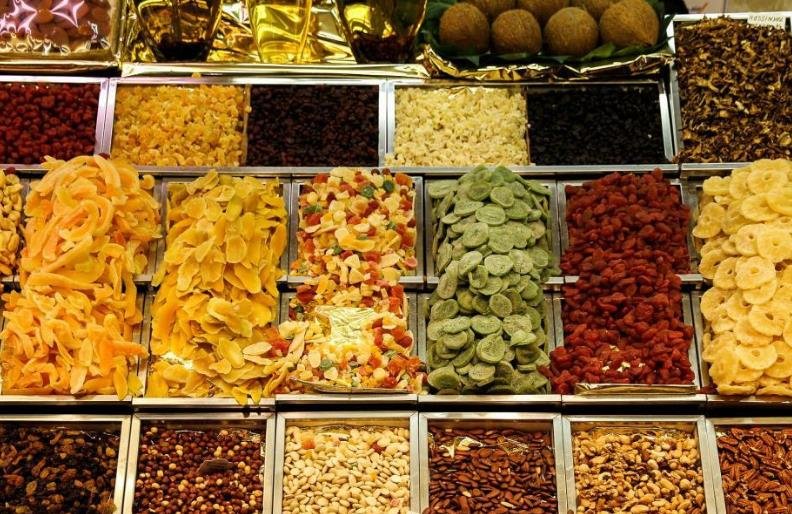The Natural Food Colors & Flavors market is on a trajectory of substantial growth, with Exactitude Consultancy projecting it to reach a valuation of USD 7.6 billion by 2033. This impressive increase is underpinned by a compound annual growth rate (CAGR) of 5.4%, reflecting a robust expansion driven by consumer preferences and industry innovations.
Market Overview: From $5 Billion to $7.6 Billion
In 2024, the Natural Food Colors & Flavors market was valued at USD 5.0 billion, according to Exactitude Consultancy’s latest report released in Luton, Bedfordshire. The market is meticulously examined, encompassing critical metrics such as market size, revenue streams, sales analysis, and primary growth drivers. The comprehensive study delves into various segments based on end-use, type, and geography, providing a holistic view of the market dynamics.
- Initial Valuation (2024): USD 5.0 billion
- Projected Valuation (2033): USD 7.6 billion
- CAGR: 5.4%
These figures signify a strong upward trend, signaling increasing acceptance and integration of natural colors and flavors in the food and beverage industry.

Drivers of Market Growth: Consumer Preferences and Health Trends
One of the foremost factors contributing to the market’s growth is the rising consumer demand for clean labels and natural ingredients. As health-conscious consumers become more discerning about the additives in their food, the preference for natural colors and flavors over synthetic alternatives has surged.
Major Drivers:
- Health and Wellness Trends: Increased awareness about the health impacts of artificial additives.
- Clean Label Movement: Growing demand for products with transparent and natural ingredient lists.
- Regulatory Support: Favorable regulations promoting the use of natural ingredients in food products.
- Innovation in Natural Extraction: Advances in technology facilitating the extraction and stabilization of natural colors and flavors.
These drivers collectively enhance the appeal of natural food colors and flavors, making them indispensable in modern food production.
Market Segmentation: Diverse Applications Across Industries
The Natural Food Colors & Flavors market is segmented based on end-use, type, and geography, each playing a pivotal role in shaping the market landscape.
By End-Use:
- Beverages: Juices, soft drinks, and alcoholic beverages.
- Dairy Products: Yogurts, cheeses, and ice creams.
- Bakery and Confectionery: Breads, pastries, candies, and chocolates.
- Processed Foods: Sauces, dressings, and ready-to-eat meals.
- Others: Pharmaceuticals and personal care products.
By Type:
- Natural Colors: Derived from plant, animal, or mineral sources.
- Natural Flavors: Extracted from fruits, vegetables, herbs, and spices.
By Geography:
- North America: Leading market due to high consumer awareness and regulatory support.
- Europe: Significant growth driven by stringent regulations and demand for natural products.
- Asia-Pacific: Rapid expansion fueled by increasing disposable incomes and urbanization.
- Latin America: Emerging market with growing food processing industries.
- Middle East & Africa: Steady growth attributed to expanding food sectors and rising health consciousness.
Regional Analysis: North America and Europe Lead the Charge
North America and Europe are at the forefront of the Natural Food Colors & Flavors market, driven by stringent regulations and a high demand for natural products. These regions are witnessing significant investments in research and development to innovate and expand their product offerings.
North America:
- Market Leaders: United States and Canada.
- Growth Factors: High consumer demand for natural products, robust food processing industries, and supportive regulatory frameworks.
Europe:
- Market Leaders: Germany, France, and the United Kingdom.
- Growth Factors: Strict food safety regulations, strong emphasis on sustainable and natural ingredients, and a large base of health-conscious consumers.
The Asia-Pacific region is anticipated to experience the highest growth rate, driven by the booming food and beverage industry and increasing health awareness among consumers.
Challenges and Opportunities: Navigating the Market Landscape
Despite the promising growth, the Natural Food Colors & Flavors market faces several challenges that could impede its progress. However, these challenges also present opportunities for innovation and strategic advancements.
Challenges:
- Higher Costs: Natural colors and flavors are generally more expensive than synthetic alternatives, impacting profit margins.
- Stability Issues: Natural ingredients can sometimes be less stable, affecting the shelf life and quality of food products.
- Limited Availability: Sourcing natural ingredients in large quantities can be challenging, especially for small and medium-sized enterprises.
Opportunities:
- Technological Advancements: Innovations in extraction and preservation techniques can enhance the stability and availability of natural ingredients.
- Sustainable Practices: Emphasizing sustainable sourcing can attract environmentally conscious consumers and align with global sustainability goals.
- Expansion into Emerging Markets: Tapping into the rapidly growing Asia-Pacific and Latin American markets can unlock new revenue streams and drive global market growth.
Future Outlook: A Promising Horizon for Natural Food Colors & Flavors
The Natural Food Colors & Flavors market is poised for sustained growth over the next decade, with a projected valuation of USD 7.6 billion by 2033. The combination of consumer demand, regulatory support, and technological innovations will continue to drive the market forward, making natural ingredients a staple in the global food and beverage industry.
Strategic Recommendations:
- Invest in R&D: Focus on developing more stable and cost-effective natural colors and flavors.
- Expand Supply Chains: Strengthen supply chains to ensure the consistent availability of natural ingredients.
- Promote Sustainability: Highlight sustainable sourcing and production practices to appeal to eco-conscious consumers.
- Enhance Marketing Efforts: Educate consumers about the benefits of natural ingredients to boost market acceptance and demand.
Embracing the Natural Shift
The Natural Food Colors & Flavors market is witnessing a transformative shift towards more natural and sustainable food production practices. As consumers continue to prioritize health and transparency, the demand for natural ingredients is set to rise, driving the market to new heights. With strategic investments and innovations, the industry is well-positioned to meet the evolving needs of the global food and beverage sector, ensuring a vibrant and healthy future for all.
















